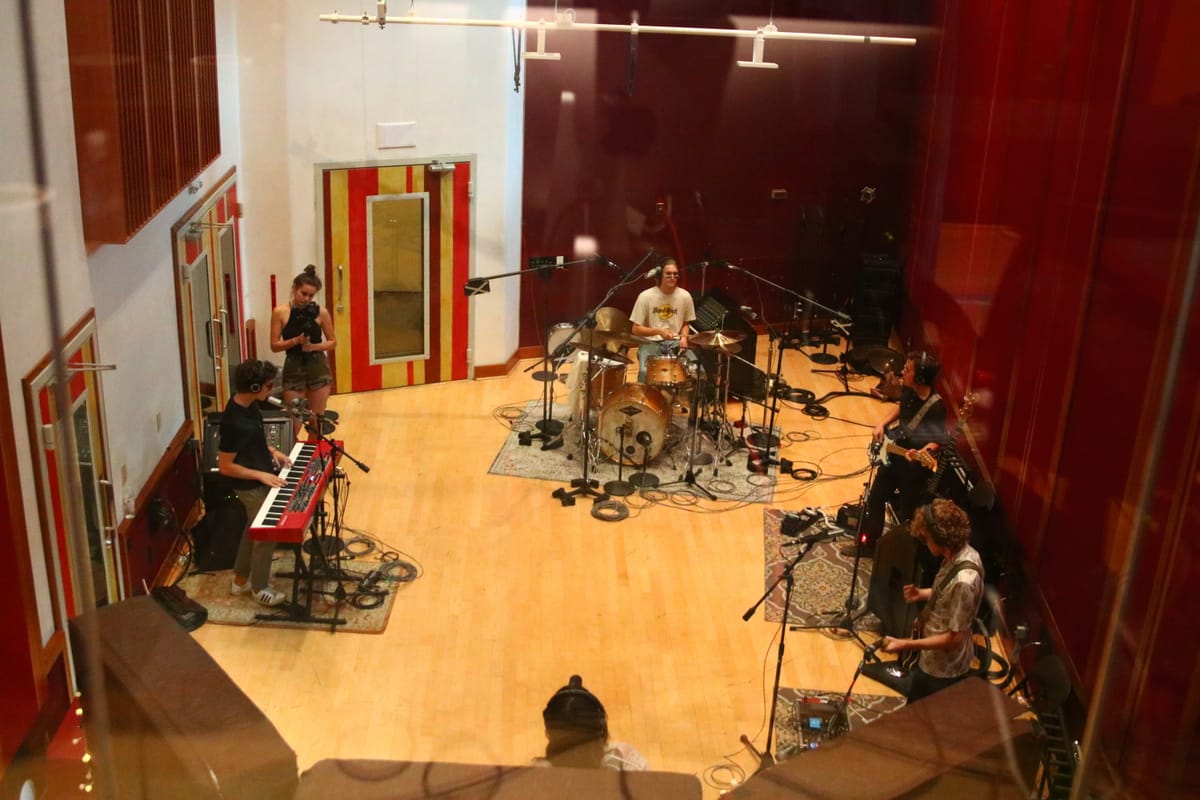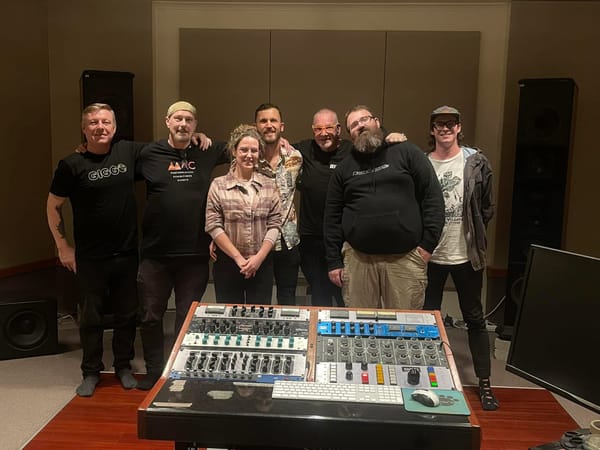Audio Economics #1 | The Music Industry’s Struggle: Wealth Inequality’s Impact on Bands, Artists, and Fans in the UK and USA

by Rich Steve Beck | PMFC Global Editor, Industry Networker, Mastering Engineer and most relevant to this blog series...an ex-banker
When you’re young, the world’s a playground of oddities. You’d watch water narrow as it spilled from the tap, wondering what bent its path. “No one’s making me solve it,” you’d think. “It’s not vital; someone’s already worked it out.” But that didn’t matter—you’d tinker anyway, just because it felt good to poke around.
That kind of instinct can pull you into something bigger, not for glory, but because it’s there. Right now, in the UK and USA, there’s a slow, heavy shift in the economy that’s got nothing to do with politics and everything to do with money drying up where it’s needed most. Wealth inequality’s tightening its hold, and the music industry—bands recording, labels finding new acts, the public affording it—is buckling under the weight.
The Economy’s Uneven Tilt
In the UK, wages have been flat for over a decade—adjusted for inflation, most people are earning less than they did in 2008. Rent and bills keep climbing, swallowing more of what’s left. The USA’s in a similar bind: median wages haven’t moved much since the ‘80s, while living costs—housing, food, basics—have shot up. The top end, though? They’re thriving. The richest 1% hold nearly 40% of wealth in the UK, over 32% in the USA, while the bottom half share less than 5%.
It’s structural. Jobs pay less in real terms, piling up in expensive hubs while other areas stagnate. Low interest rates juice asset prices—stocks, property—for those who’ve already got plenty, but wages stay stuck. For the middle and poorer classes, it’s a grind: less cash coming in, more going out, no buffer. That’s the backdrop bands and artists are playing against.
Bands and Artists Recording: The Cost Crunch
For musicians, this hits hard. Most aren’t stadium-fillers—they’re small bands or solo acts, scraping by on gigs and streams. Recording’s a beast now. A decent studio day in the UK runs £500; in the USA, it’s $700. Gear—amps, mics, software—adds up fast. Streaming pays next to nothing—£0.003 per play on Spotify means a million streams barely covers a month’s rent. For bands, that’s a wall: no cash to lay down tracks, no way to polish a sound.
The middle class used to be a lifeline—artists could gig part-time, record on a shoestring, build slowly. Now, that’s fading. Fewer can afford the upfront cost of an EP—loans are risky, second jobs eat time. New acts struggle to even start; the ones already going cut corners or stall. It’s not just about talent—it’s about having enough left to press ‘record’.
Finding New Acts: A Shrinking Pool
Labels and scouts are feeling it too. Finding new talent means sifting through demos, hitting gigs, taking punts. But with budgets tight—especially for indie outfits—there’s less room to gamble. The UK’s arts funding’s been gutted 40% since 2010; in the USA, small labels lean on sales that aren’t there. If artists can’t afford to record, there’s less to find. The pool shrinks—fewer rough cuts, fewer breakout chances.
Big players might still cherry-pick, but they’re after sure bets, not raw potential. The middle ground—where new acts used to simmer—gets quieter. Bands that might’ve been signed a decade ago stay unsigned now, drowned out by economics, not noise.
The Public: Can They Afford It?
Then there’s the fans. Gigs aren’t cheap—£35-£40 for a decent show in the UK, $50 or more in the USA. Albums, merch, even a fiver for a local set—it adds up. But when your pay’s stretched thin by rent and groceries, music slips down the list. In the UK, disposable income’s barely budged since 2010; in the USA, the bottom 60% have seen almost no growth. The middle’s thinning—fewer people with spare cash to drop on a night out or a vinyl.
It’s not just skipping shows. Streaming’s free tier keeps fans hooked, but artists see scraps from ads. The public’s not flush—less buying power means less support, full stop. Bands rely on ticket stubs and T-shirt sales; when wallets stay shut, that dries up.
A Split Industry
This could fracture things. On one end, you’ve got premium gigs—£150 tickets for exclusive nights, $200 for private shows. The wealthy don’t flinch; they’ll pay. On the other, you’ve got the bare-bones—cheap, scrappy sets from acts with nothing to lose. The in-between—mid-sized venues, mid-level bands—fades as costs rise and crowds thin. Two scenes emerge: one for the flush, one for the broke.
Wealth keeps pooling at the top—tax breaks on capital, unchecked property grabs—while the rest scrape by. Labels might lean posh or starve; artists might polish for the rich or grit it out for the rest. Either way, the middle’s squeezed out.
No Quick Fix
You’d think politics could nudge this, but it’s deeper. In the UK, parties argue over jobs or cuts, ignoring the wealth gap. In the USA, it’s healthcare versus tax breaks—same dodge. The system’s built to favour the top, not to float bands or fans. No one’s funding studios or capping ticket prices. The economy rolls on, and music’s left to ride it out.
What’s Next
Back when you were a kid, you’d fiddle with things for no reason. Now, the music industry’s in a bind it didn’t ask for. In the UK and USA, bands might record less—too skint to start, too stretched to finish. New acts could stay buried, unheard. Fans might lean on free streams, leaving artists hanging. What comes out could split—sleek for the rich, rough for the rest.
It’s not one person’s fight—it’s everyone’s reality. Wealth inequality is draining the poorer and middle classes, and the music industry is paying the price. How it holds up depends on who’s still got enough to keep it going.
Thanks for reading!
This blog is the first of many in relation to how finance, business, and economics impact the music industry and you working in the arts.
As well as working in the music industry, Rich has worked in the finance sector for almost two decades and interviewed over 15000 people face-to-face. From the richest to the poorest of the poor.
The aim of this audio economic blog series is to question the norm, get educated, research, discuss finance, protect your own income (and your childrens) and how we can support our music industry during one of the most turbulent financial times in modern history.




